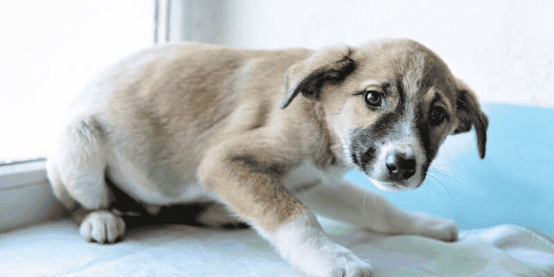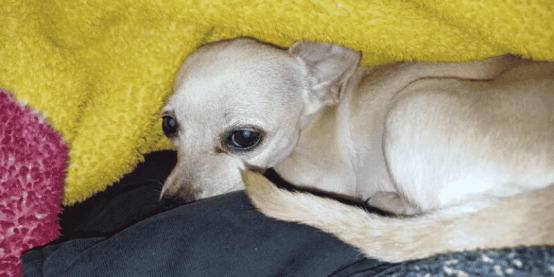Pets
How To Spot Signs Of Anxiety In Puppies (And Calm Them Fast)
Puppies are the love of a baby wrapped in pure fur and playfulness. But, like humans, they can get stressed or scared. I have studied dog behaviour for years and witnessed how anxiety impacts even the happiest pups. The signs of anxiety — and how to help — can be knowing if you're a new puppy parent.
Puppies are the love of a baby wrapped in pure fur and playfulness. But, like humans, they can get stressed or scared. I have studied dog behaviour for years and witnessed how anxiety impacts even the happiest pups. The signs of anxiety — and how to help — can be knowing if you're a new puppy parent.
Why Puppies Get Anxious
Puppies are eager learners, but new experiences can be overwhelming for them. Loud sounds, strangers, or changes in routine may trigger fear. Some breeds are more sensitive, and others can be insecure when separated from their littermates. A park visit can seem dangerous if they haven't visited one in a while. It is all about monitoring their body language and actions.

How To Tell If Your Puppy Is Stressed — a Body Language Guide
Your puppy cannot say, “I’m feeling stressed!” but their body language tells a different story. Here’s what to look for:
Panting or Drooling
If your puppy is panting often, even when it's cool, or drooling more than usual, their nervous system may be alarmed. Think about how you feel on a gruelling math test—your heart is racing, right? They think that way, but they express it with their mouth.
Shaking or Trembling
A puppy trembling like a leaf in a thunderstorm or driving in a car is more likely terrified. These are their versions of "I need comfort!"
Lip-Licking or Yawning
Nervous puppies may lick their lips or yawn, even if they’re not sleepy. It’s their version of biting nails.
Bathroom Accidents
Anxiety can cause an upset tummy, resulting in diarrhoea, or trigger them to pee indoors even if they're house-trained.
Behavioural Clues To Watch For
Anxiety puppies get fidgety in a different way. These behaviours may appear scattered, but they're SOS:
Barking or Whining
Puppies also tend to bark repeatedly and/or whimper pitifully when they feel insecure. This is a way of saying, "What's going on here?"
Chewing or Digging
If your puppy tears up shoes or digs into the carpet, they're not being "bad." They're turning Stress into something they can make the rules about.
Hiding or Avoiding
A puppy who crouches low, backs away, or lifts a paw says, "I'm afraid — please don't come any closer!".
Clinginess
Some anxious puppies become glued to your side. They would have them on their heels, terrified of being left alone.
Emotional Indicators That You May Overlook
Our anxiety isn’t only physical—it’s also emotional.” Look for subtle shifts:
“Sad” Eyes
Dull and wide eyes or furrowed brows indicate your puppy is sad.
Loss of Interest
Stress may be sapping their energy if toys are ignored or meals are skipped.
Appeasement Grins
A puppy may smile (show teeth without growling) to be accepted and get along. It's like saying, "Please don't hurt me!"

How To Calm Your Puppy Fast
At the sight of anxiety, hurry up. Follow these steps to calm your pup in minutes:
Remove the Stressor
If a loud sound or a crowded room triggers panic, move the person to a quiet place, like turning off that scary movie show.
Use a Calm Voice
Avoid baby talk and speak softly. Repeat, “It’s OK,” and speak softly. They need your calmness to feel safe.
Offer Physical Comfort
You can pet them slowly or let them sit on your lap. Try not to hug too tightly, as this can be stressful for some puppies.
Distract with Treats or Toys
A beloved chew toy or a few handfuls of treats can shift their attention. It’s like providing them with a puzzle to piece together.
Try a “Zen” Den
Make a snuggly hideout out of some blankets and favourite toys. For extra comfort, add a T-shirt that smells of you.
How To Find Permanent Solutions For a Happier Pup
Short-term fixes help, but long-term strategies breed confidence:
Stick to a Routine
Puppies are all about predictability. Daily at the exact times: Feed, walk and play. Change can make them uneasy.
Socialize Slowly
New people, dogs, or places will be introduced very gradually. Allow them to sniff and explore at their own pace.
Exercise Their Body and Mind
A sleepy puppy is a subdued puppy. Play fetch, work on tricks or use treat-dispensing toys to wring out energy.
Use Calming Aids
Pheromone diffusers that plug into the wall or calming collars emit scents that mother dogs produce to ease anxiety.
Train with Positivity
Encourage good behaviour with treats and praise. Never punish an anxious puppy (it will only exacerbate their fear).
When To Ask a Vet For Help
For the most part, anxiety dissipates in time and with patience. But if your puppy:
Stops eating or sleeping.
Bites or growls when scared.
Shows symptoms for weeks.
…call a vet. They can eliminate health problems or recommend drugs for more severe cases.

Building Trust Takes Time
Helping a fearful puppy isn’t about “solving” them in one go. It’s about little things: a soft walk, a gentle touch, a warm blanket. Say hooray for progress, even if it’s tiny. Know that your patience and love are their safest sanctuary.
Helping Your Puppy Thrive
Every puppy should feel safe. By noticing anxiety early and responding with kindness, you're producing a happy dog and creating a lifelong connection. Watch them radiate, stay alert, stay chilled, and watch your child blossom.



